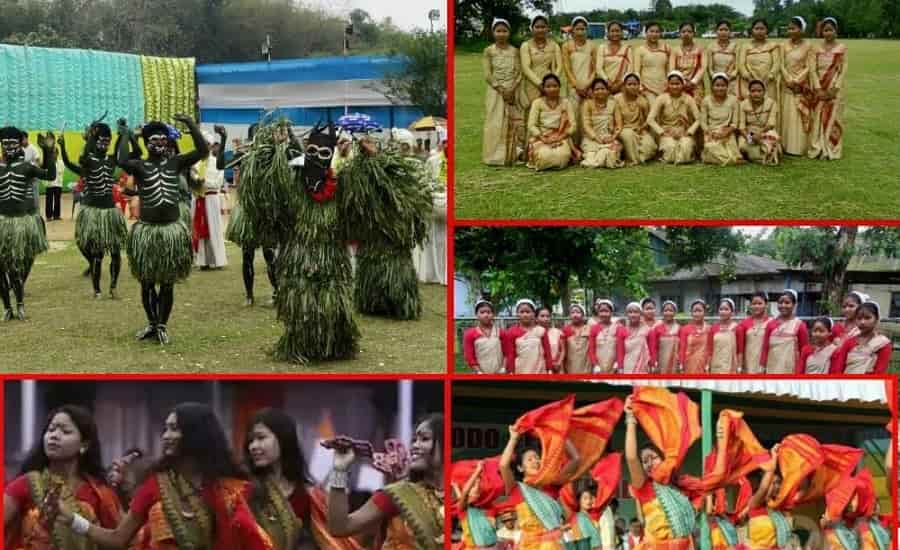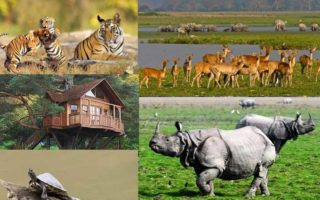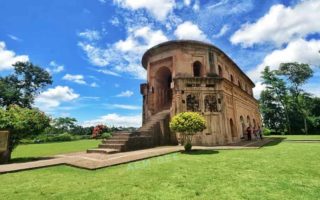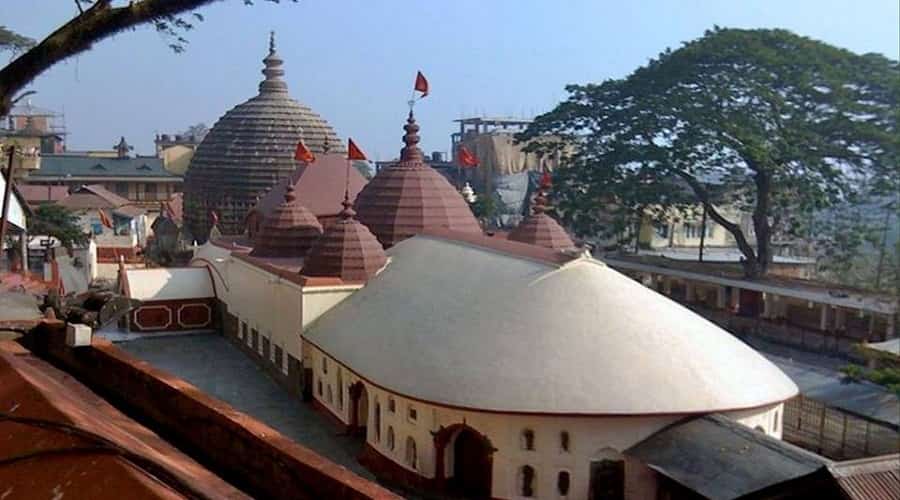Assam state is historically rich and culturally a royal state that has very amazing and interesting factors. From climate till tribes of this state, you will find uniqueness and refreshing aspects. As per the other states of India, Assam state also includes colorful Culture and enthusiastic people. This state has a rich history that reflects through the religion, language, arts & crafts and climate of this state.
Climate
Climate of Assam state is one of the essential factors of this state, which has contributed to make this state pleasant and eligible to contain hill stations like Guwahati, Manali etc. here you will get to enjoy sub alpine weather. Assam state is more of a hilly place, that’s why along with pleasant climate; it also serves marvelous beauty of nature. With cool climate, the weather of Assam state also includes humidity in all seasons. The most favorable and favorite season is winter, during this season, Assam state comes in its real and pure look that is unbelievable and tremendous.
Religion
Religion is an internal soul of this state, society and community, and it is necessary for the development. Assam state’s community contains various numbers of religions such as Christianity, Hinduism, Buddhism, Islam, Buddhism and Sikhism. Despite from these religions different original groups are also live in this state such as Tantricism, Animism, Vaishnavism and Brahminism. Even if there are so many different religions still all Assamese are live lovingly.
Language
Assam state follows two official languages, which are Bodo and Assamese, though few districts of this state like Barak Valley, speak in Bengali language. Most of the Assamese talks in Assamese language. The language which is majorly used is known as Asamiya. From the Indo Aryan family, the word Assamese has been derived. Actually this language was born from India’s rich Sanskrit language, during the seventh century. The literature of Assam states has been popular as India’s richest literature.
Arts & Crafts
Beautiful and intricate arts and crafts are one of the attractive aspects of this state. In the arts and crafts of Assam state, you will find the real face of this state, because it is a pure art of this state, made by creative hands of Assamese. Handicrafts like Bamboo and cane, metal work, Pottery, Handlooms, toys, Masks, wood work and Jewellery etc. Number of tourists specially visits Assam to buy the classic and beautiful craft and art of this state.
Tribes
Assam state’s population highly contains various types of tribes, along with their beliefs and customs. The presence of tribal people starts from hilly areas of Assam. There are tribes like Dimasa, Bodo, Nishi, Rabha, Mishing, Santhal, Singpho, Phake, Karbi, Khamti, Khamyang etc. Few tribes of Assam state are connected to the great history of India. These tribes have become one of the amazing and interesting aspects of this state.

Barman
Assam state of India has various tribes; this state is like an abode of numbers of tribes. Barman is one of the prime tribe of this state. It is not other than Hinduism Kachari, it is more perfect Hinduism Dimasas that is located within the Cachar district. The group of this tribe are self made that is made of Boro and Kachari, after some time, they established their group as Dimasa. This tribal type of Assam has more Hindus compared to other tribal groups. Within the ancient countless spiritual festivals, till today they have preserved one very historical religious ritual that is Dainie Puja. In this ritual, Barman tribe’s Hindus rule their funerals and marriages. As per the Barman tribal people, they consider themselves as inherited of Kshatriyas. For survival, people of Barman have adopted agriculture as their prime occupation.
If you want to visit Barman tribal people then during your Assam trip, do must visit the hilly area, there you will surely get to see the Barman tribe. They always choose a particular place, where the river is flowing, so that they can easily establish their tribe.
Karbi
People of Assam state considered that Mikir or Karbi is one of the most historical races of this state. The talented artist Bishnu Prasad Rabha believed that Karbis tribe is Assam’s Columbus. They give huge importance to their culture, religious beliefs and tradition that’s why they still follow it. Their Primitive man was Hemphu. As per the Karbi tradition, their 1st king was Sat Recho, he promised them his renaissance at specific civilization stage to dominate over the earth one more time. Few clans of Karbis considered that they have derived totemistic. The very respected and faithful god of Karbi’s is Barithe, it is a heaven’s god. Their prime social event is Chamangkan.
Majorly, Karbi dwell in a district called Sibsagar and few portion of Nowgong. Huge numbers of Karbis were into Jhum cultivation, until the 50th, but at present all people of Karbis have converted into wet cultivation. If you observe the house pattern of Karbis, you will find resemblance of their house with Radha house. For their tribal village, people of Karbis majorly prefer land that is located at hill’s foot area. Their village has many families and their village got the name later the headman.
Tiwa
This tribe of Assam state is another part of the huge Boro Kachari, during the thirteenth or fourteenth century, people of Tiwa tribe used to stay close to Boro Kachari’s capital, it is located as Dimapur. Unknowingly huge numbers of tribe went down to Kampur, Nagaon and Lakhimpur plains. Tiwas tribe’s religion is similar to Boro Kachari tribe. These tribals also follow Poly demonism’s culture. Pha is Tiwas tribe’s primitive god, the meaning of this word is father. They considered Pha as nothing but great Lord Shiva. As per other tribes or rather as per India’s very region, Tiwas also includes some festivals, many religious functions and Pujas. The Sagramichowa and Changkhong are 2 religious Pujas, which are linked to fertility and spring.
You will get to see majority of Tiwas population in the Nagaon district. As per the occupation in village, Boro Kacharis are better than Lalungs. Women of this tribe are known as god weavers. You won’t find bright difference among the Lalung village and Boro Kachari. The folk women have major respect within the Tiwas society.
Bodo
Assam state’s Bodos tribe is one more essential tribe of this state, the name Bodo has originated from Bhotia, it serves to explain various Trans Himalayan tribals that contains Daflas, Monpas, Arunachal Pradesh state’s Mishimis, Meghalaya’s Garos and Tripura’s Cachar hills. This tribe of Assam is also popular as Boro Kachari, who was ruling over India’s northern Eastern part, from the Ramayana days, during that time it has developed its civilization, which flourished until the eighteenth century’s ending part. People of Bodo Kachari tribe are parts of Indo Chinese, its real origin is connected to Hoang-Ho and Yangtse – Kiang. Bodo tribes follow their own traditions, customs and religious beliefs.
They believe in marriage by cooperation, it is majorly performed by the Bodo tribal people. Groom of Bodo and Kacharis still occupy the bride through serving in the bride’s house. This type of marriage is known as matri’s practice, within the Boro Kachari’s residence. People of this tribe usually follow exogamy. Tribal people of Boro Kachari are considered as totemistic. This tribe has huge clan names that showcase their birth from plants and animals like Hari-clan, Massahari, Owari, Massa-Tiger, Hari clan, betelnut, Goyari, and Oqwa-bamboo etc. The people of Bodo and Kacharis practice an art known as Cleromacy. To occupy one particular God, who has carried specific disaster in the family or to search hidden domestic animals, the tribals request the Ojha village, who suggested them cleromancy. As per other normal caste or religion’s people, Bodos people also celebrate their joy through dance and singing.
The prime dance form of this tribe is Deodhani, generally this dance is practiced within the Kherai festival, it looks if they performed necromancy, and it is one more divination form to tell the various happenings. You will find the people of Bodo and Kachari tribe majorly within the remote area, that come under the various districts such as Kamrup, Goalpara and some part of Darrang and 2 hills districts, here they are popular as Dimasas. Few scholars considered that Boro Cacharis are 1st agricultural Nomad, who entered inside the globe part. Bodo Kacharis were the 1st people, who established the irrigation system, they guided them how to dwell themselves along with plants. The first tribe that has used the silk culture art. The prime occupation of this tribe is agriculture, for survival, majorly they practice wet cultivation.
The village of Bodo Kachari is self sufficient, because they have goldsmiths, merchants, coppersmiths, blacksmiths and carpenters, here you will find that each woman of this tribe is a weaver. There is a saying that from Indo Mongoloid, India has adopted the embroidery and weaving technique. Within Assam state, earlier Bodo Kachari tribal people were the pillars due to their marvelous craft art and skills.
Mishing
This tribe of Assam state is popular as a northern hill’s blockbusters, earlier the people of Mishing tribe decided to come towards the downside and settled on plains, after that they never returned back. Though in those days, this tribe was popular as Miris, the meaning of this word is might be go between. Abu Tani was their primitive man; he was Donyi Polo’s son, e.g father moon and mother sun. Mishing tribe’s most multi-coloured festival is Ali Ai Ligang. Along with the start of every spring, village people of Mishing get thruster in the gay abandon.
Mishing tribe includes multi colored and gay people, people of their tribe are easy going, their customs and rules are very informal. They behave very conservatively but they are interesting and they can easily settle themselves as per the atmosphere. Their later quality distributes them from rest of the local tribes. At present, their abode is located at Assam’s upper tributaries, which are Brahmaputra’s tributaries and their estuaries. Majority of Mishing villages are located over the river bank. Usually Mishings tribal people construct their house as per north and south, with the support of a pole ladder. They always keep one door on the front side and on the back side one more door, and inside the house they always have dorm despite any partition.
Deori
This tribe of Assam state is a Chutiya’s branch; it was derived from the Bodo race. Their regional language is Chutiya language.. Chutiya tribe has been divided into the 4 divisions, which are as follows:
- Ahom Chutia
- Hindu Chutia
- Deori Chutia
- Borahi Chutia
Assam’s Deori tribe belongs to Tengaponia clan, due to that they don’t eat flesh or mutton because it has been prohibited as per the legend clan. Deori term has been generated as later currency was originated from Deva, the meaning of this word is God. Majorly you will get to see Deori people within Sibsagar and Lakhimpur districts. This tribe’s people are generally bilingual, they talk in their own language and also in Assamese. Their prime source of earning is agriculture. Within numbers of Deori village, you will find traditional community, which are the centers of weaving of girls. Usually villages of Deori tribe are established in Rive side areas, because on these areas only they can have fertile land. Villages of Deori contain 30 or more houses. Generally they built their houses over the platform of bamboo; they majorly construct their house around 5 feet.
Rabha
As per the Mishing, Kachari, Garo and many more Assam’s aboriginal tribes that belongs to Northeast, this tribe also has perseverance of legends that are supposed to describe how this earth and so many lives have been generated, how they started to worship various unanimated and animated elements and to settle down in some specific areas. This historical legend was a medium of Marugeet, it was a lengthy devotional song, which was performed during Khaksi Puja, people of Rabhas tribe’s practice this Puja in the spring festival. This tribe performs monogamy. Every year they practice a festival that is dedicated to clan’s dead Kings, which are also popular as Farkhanthi. Rabhas tribe’s hugest festival is Baikho, it is also popular as Khaksi, it holds as a fertility festival.
Their regional language is very different but it is little similar to Kachari, there is a reason both the tribes belong to Assam Burmese. Currently Rabha language is used by a handful that belongs to Maitoria and Rangdaniya groups. The economy of this tribe’s village is completely dependant on agriculture. Almost each and every tribal person of this tribe is engaged in agriculture occupation. The village of Rabhas is settled through either Maitoria group or Rangdiniya. The house pattern of Rabhas tribal is different from other tribes, they built house of 2 roof. These types of differences have made each tribe of Assam unique and special in themselves.


